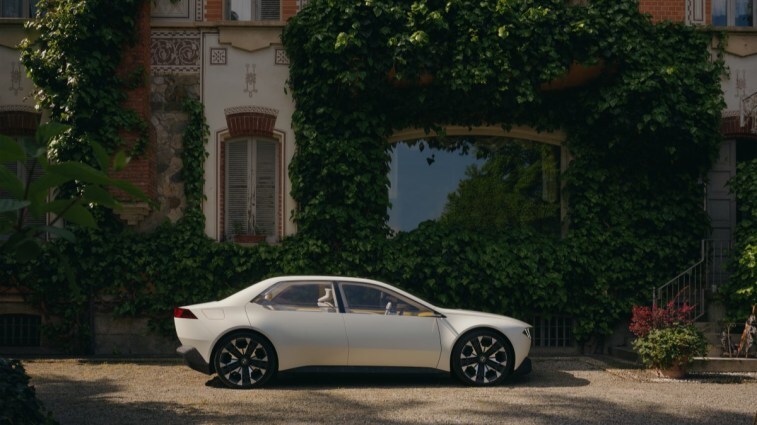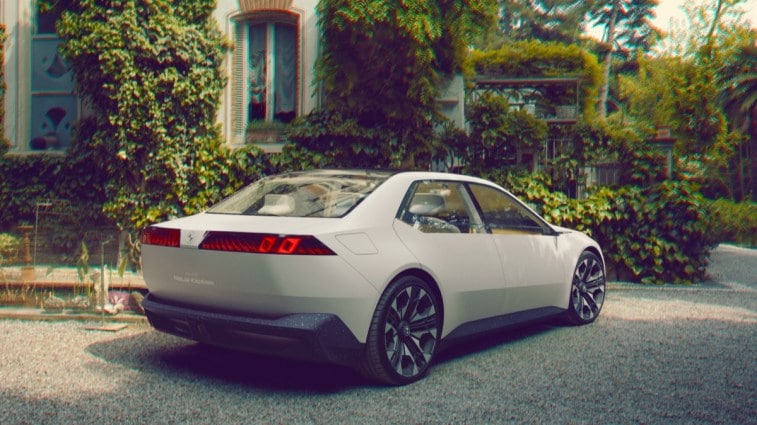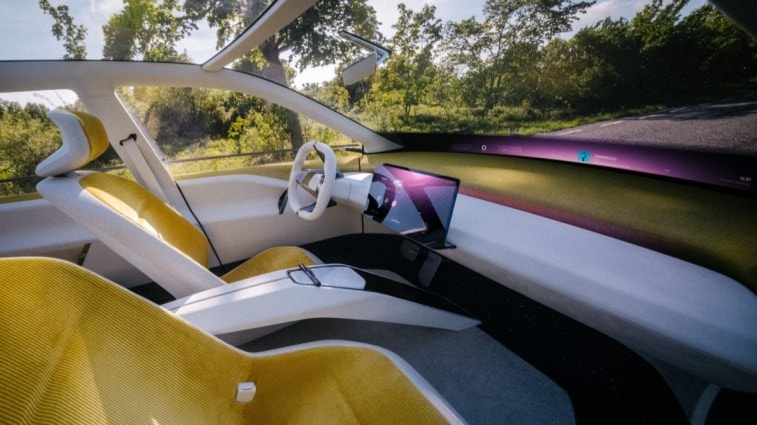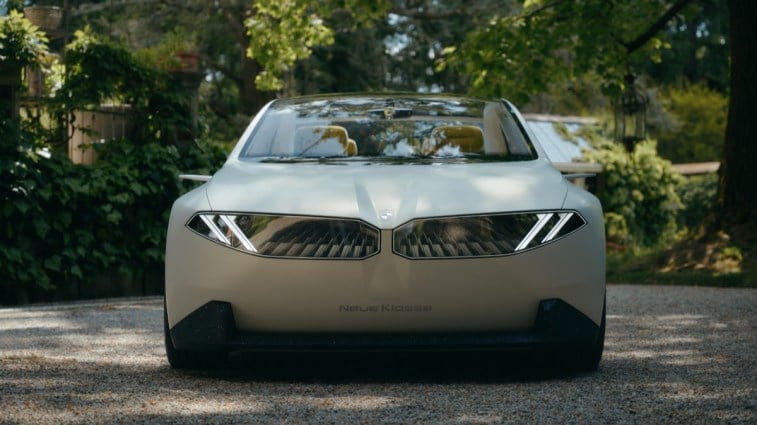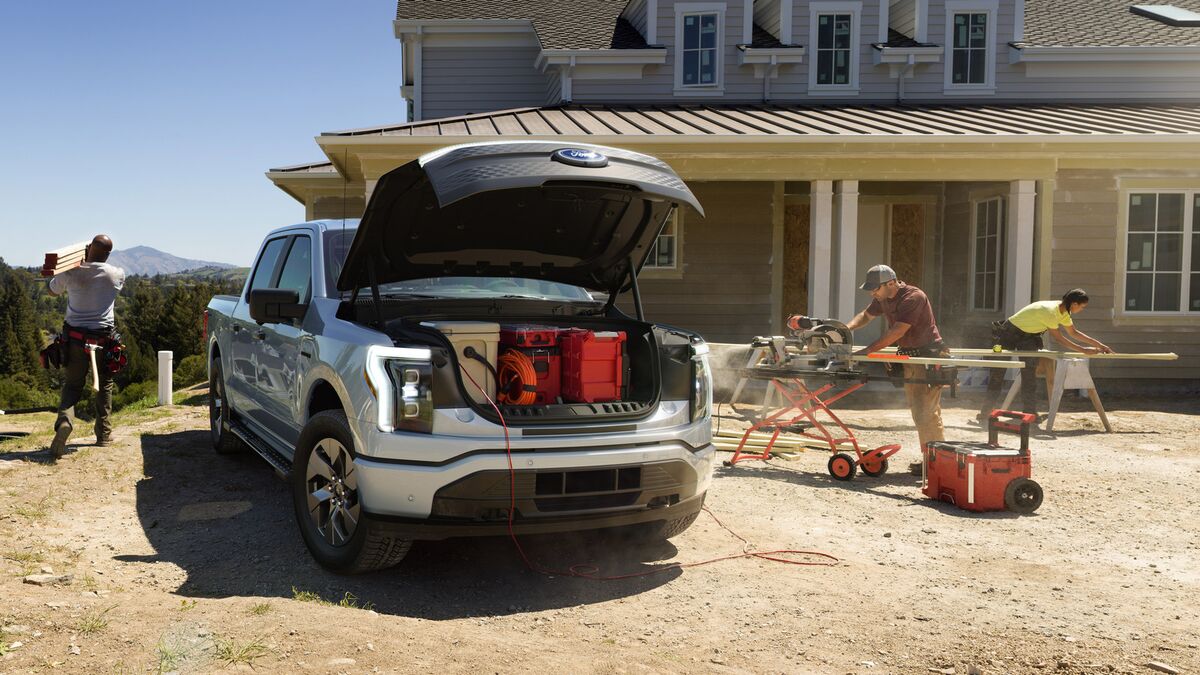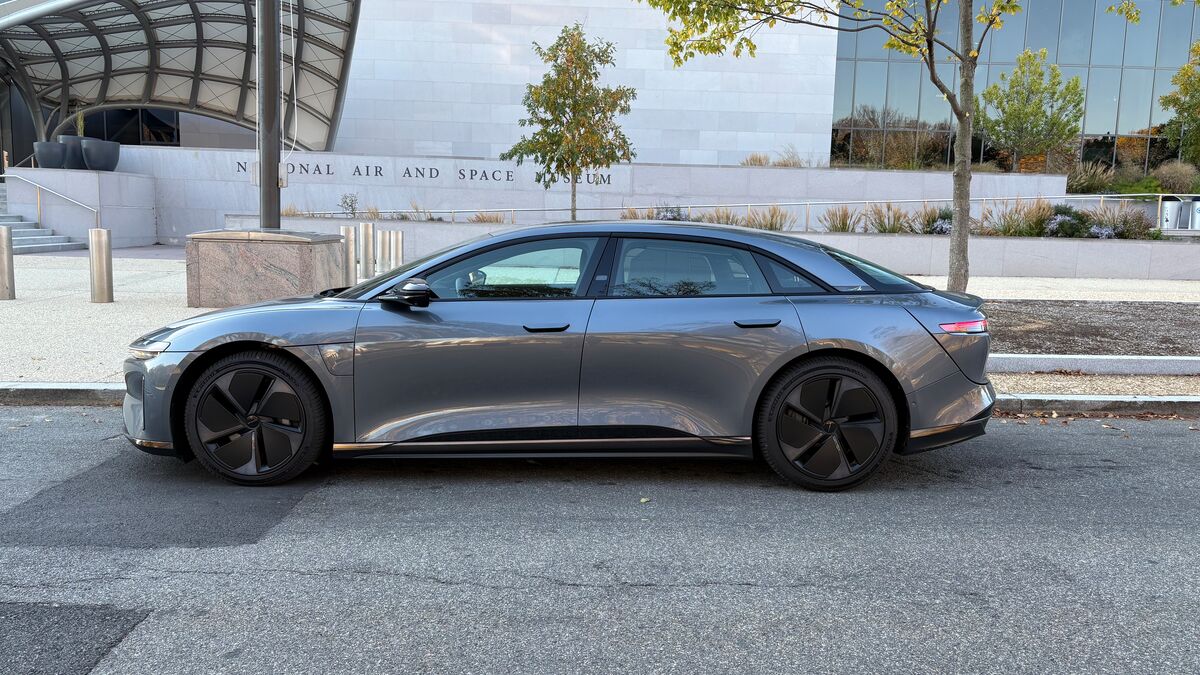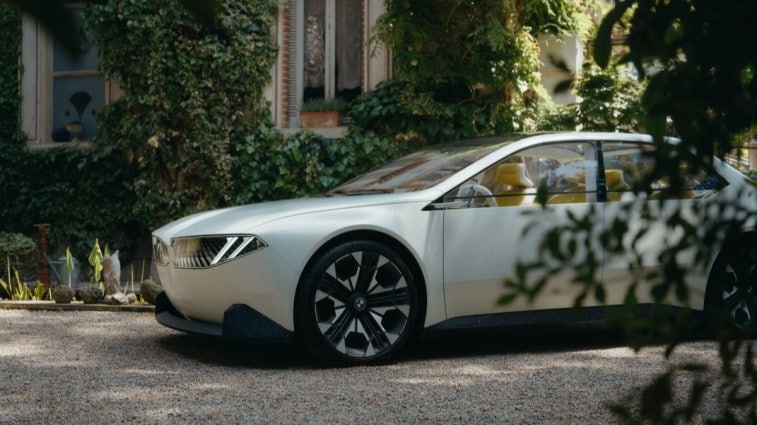
The automotive world has a handful of sacred traditions. There may be none among them as inviolate as the debut of a new BMW design concept. About once a decade, Munich’s most celebrated automaker releases a new vision for its future designs and the faithful howl that they hate it. Then they spend the rest of the decade buying it.
The cycle may, however, be broken soon.
BMW has unveiled a new concept car meant to show off its future design direction. So far, the automotive internet has received it with praise.
What’s triggering the impossible? A new concept car called the BMW Vision Neue Klasse.
It’s meant, the German luxury brand says, to showcase what the next generation of BMW vehicles will look like. It made its appearance this weekend at the Munich Motor Show.
The Vision Neue Klasse is a small sedan – likely a hint at the future of the iconic 3 Series. But Frank Weber, member of the Board of Management of BMW AG responsible for Development, says it “will certainly impact all model generations.”
Clean and Simple
For several generations, BMW designs have been growing more complex. From the “flame-sided” designs of the late 1990s to today’s huge two-nostril grille, designers have added rather than taken away with each evolution.
The Neue Klasse feels like a reset. It’s unerringly simple. It “embodies a clear design language, with expansive surfaces and just a few distinctive lines, that has been pared down to the essentials,” the company says.
Classic BMW signatures are there, including the two-kidney grille and the Hofmeister kink at the rear windows. But, otherwise, the design is remarkably smooth and free of complexities. In that way, it feels more continuous with BMW designs of the 1970s than with anything the company produces today.
We see a clear inspiration from the classic 2002 model of the early 1970s.
But the simple look belies an advanced level of technology inside and out. The grille isn’t a grille (the Neue Klasse look seems destined for electric cars, which don’t need the airflow of a traditional grille). Instead, it’s a communication surface that functions like a pair of digital screens.
A “three-dimensional animation initiates intuitive interaction between the human and their vehicle as soon as they approach the car,” the company says.
Even the windows act like screens. BMW explains, “E ink elements in the lower portion of the side windows also feature in the exterior welcome scenario, directing attention to the sensor area that activates automatic door opening.”
Interactive Cabin
The Neue Klasse takes a lot from the I Vision Dee concept BMW released in January. But it doesn’t go quite as far as that car, which talks conversationally to its owner.
Instead, it gets the next generation of BMW’s iDrive infotainment system. It includes a system called BMW Panoramic Vision that projects information directly on the windshield low in the driver’s view, as well as the now-traditional central touchscreen. “Analogue operating controls have been reduced to a minimum,” the company says. Instead, drivers get steering-wheel-mounted buttons, and both driver and passenger control most functions through voice commands.
Perhaps the most controversial element of the design is the mustard yellow corduroy upholstery. That may not make it to a production car, but BMW says future interiors will be “completely free of decorative chrome or leather,” which “helps optimize the carbon footprint of the production process.”
Electric, but the Details Are Cloudy
BMW says the Vision Neue Klasse uses “sixth-generation BMW eDrive technology” but remains vague about precisely what that means. Weber promises “30 percent more range, 30 percent faster charging, 25 percent more efficiency” without specifying what vehicle he’s comparing it to.
The company does explain that the car uses “newly-developed round battery cells, with more than 20 percent higher energy density than that of the prismatic cells previously used.” There’s no word on whether these came out of the company’s research toward more efficient solid-state batteries. BMW has previously said it could test advanced solid-state technology on the road this year.
From Concept to Showroom?
Most concept cars are toned down significantly before they reach production status. We don’t expect to see future BMWs with corduroy upholstery and windows that project images anytime soon.
But the design language of the Neue Klasse is so simple that it doesn’t leave much room to strip away features for production.
Like most automakers, BMW now sells more SUVs than sedans in the U.S. But the emotional heart of the brand remains its 3 Series sedan. The current 3 Series was designed for the 2019 model year. That makes a future redesign likely around the 2026 model year.
We wouldn’t be surprised to see an updated 3 Series borrowing heavily from this vision around then. But, the Neue Klasse design might not translate well to internal-combustion-powered models. The current state of EV infrastructure suggests that automakers might not want to offer fully-electric lineups so soon.
So this design may well be two generations away from showrooms or appear first on an updated version of the i4 electric sedan expected closer to 2030. That gives the BMW faithful plenty of time to work up an appetite for what may be the best-looking new generation of BMW design in decades.
We can’t recall the last time they weren’t dreading the change (but planning to buy one). But today, pigs are on the wing, and BMW bulletin boards are buzzing with excitement over a brand redesign.
